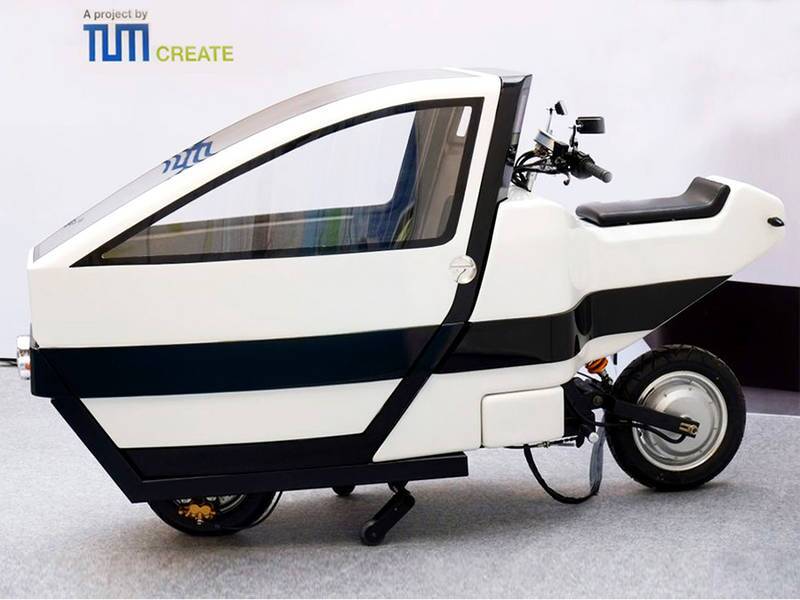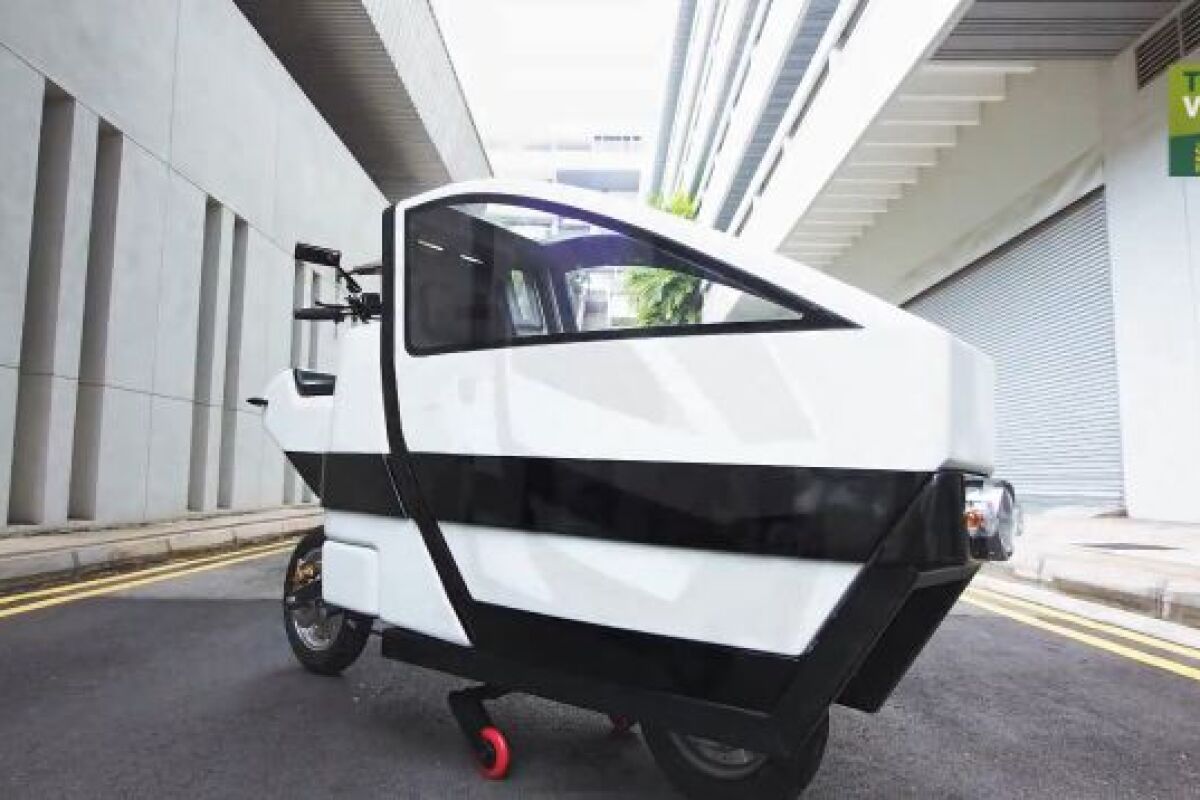What do you do if you’re a businessman who needs to quickly get from one meeting to another, via the taxi-thwarting congested roads of a “megacity”? You could try a scooter, but what if it’s raining? That’s where the rickshaw-like VOI electric scooter prototype enters the picture. It protects the passenger in an enclosed front compartment, while the driver sits exposed to the elements in the back.
The VOI takes its name from the Vietnamese word for elephant, which is considered to be a safe and reliable means of transportation in that country. Built in Singapore, the vehicle was designed in a joint effort between final-year students from Germany’s Technische Universität Muenchen and Singapore’s Nanyang Technological University.
It’s intended to blend the maneuverability and low cost of a scooter with the safety and comfort of a car – not unlike Lit Motors’ C-1 – although it would be interesting to know just how crash-worthy that front passenger compartment is. The compartment does reportedly add to the rigidity of the chassis, plus it can be swapped out for a cargo box, or even for a compact mobile kitchen for use by street vendors.

The vehicle has a top speed of 45 km/h (28 mph) and a range of approximately 80 kilometers (50 miles) per charge. Besides its use for beating the traffic in metropolises, it could also find use as a form of “last mile” transportation, ferrying passengers between their destinations and public transit systems such as trains.
Created as part of Technische Universität Muenchen’s TUM CREATE program, the VOI was recently unveiled at the 3rd Taiwan International Electric Vehicle Show. There’s no word at this point on the possibility of commercial production.
It can be seen being put together and tried out in the video below.
Source: Technische Universität Muenchen






